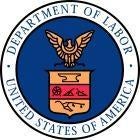Earlier this week, I made my second visit to Austin, Texas, in as many months. In May, I traveled with President Obama to Manor New Tech, a state-of-the-art high school using innovative teaching techniques to prepare its diverse student body for college as well as jobs in the science, technology, engineering and math – STEM – fields.
This time, I returned to Austin to continue the discussion about the Labor Department’s role in preparing students and workers for STEM jobs.
I participated in the keynote panel of U.S. News’ annual STEM Solutions Conference: “What Big Employers Want.” I shared the stage with Michael Araten, the CEO of K’Nex, and Sajan Pillai, the CEO of UST Global, to discuss how we can continue building a skills infrastructure that matches the needs of local and multinational employers through local training programs and Labor Department funding.
The Labor Department is already making important contributions through initiatives like the Trade Adjustment Assistance Community College to Career Training Program, known asTAACCCT. We’ve distributed $1 billion over the last two years – with another $1 billion to come in the next two − to community colleges across the country to partner with employers and develop curricula, buy equipment and hire instructors who can train trade-affected and other workers for jobs available in their community now, and for careers that will support a middle class lifestyle for years to come.
An important part of the TAACCCT program is moving beyond the certificates or degrees that companies have traditionally required for a new hire and instead, to focus on the actual skills and competencies needed to perform the job. Sajan Pillai, one of my co-panelists at the STEM conference, agreed: “For so long, companies have been focused on certificate models – do you have an associate’s degree? Do you have a bachelor’s degree? But the shift towards a competencytraining model is the right one.”
I also visited Austin Community College, a national leader in training students for “middle-skill” jobs in the STEM fields. Over the past two years, as part of the TAACCCT program, ACC has received nearly $5 million to partner with local employers to build training programs for in-demand careers. I joined ACC’s celebration of its “Highland Project” – the purchase of a vacant shopping mall with 1.2 million square feet of space that will be turned into a sparkling new training facility next year. The curriculum developed with the department’s funding will be used at the country’s largest Math Emporium, which will be housed at ACC’s new facility.
Visionary communities realize that skills development is the leading edge of economic development. Austin is one of those communities − and with the help of institutions like ACC, businesses like IBM, and a little financial push from the federal government − it is building the skills infrastructure that will keep the city, and our country, thriving for years to come.
Seth Harris is the acting secretary of labor and the author of this article.


 />i
/>i
